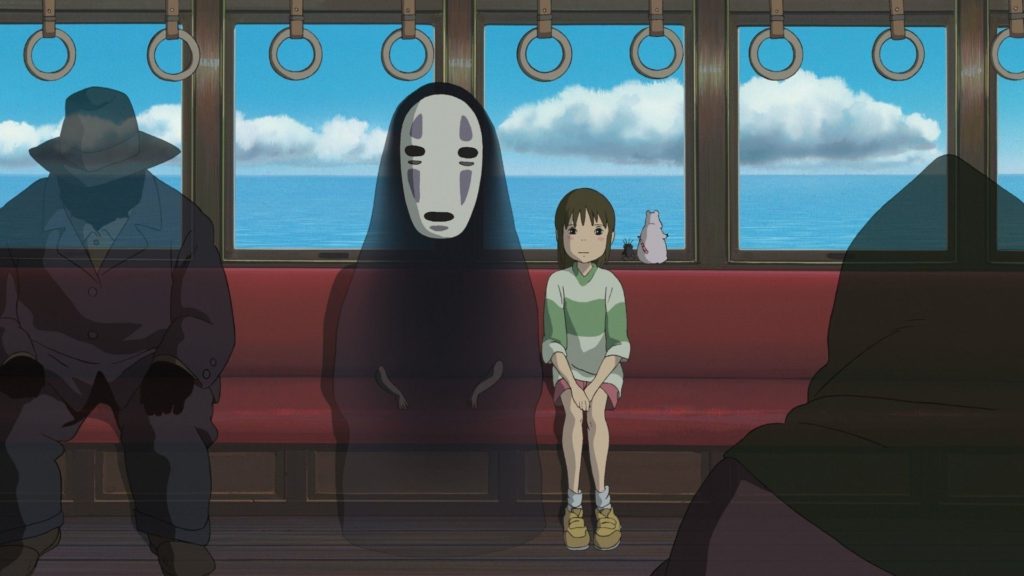From jumping back to the past to starting in medias res (“in the midst of things”), great narratives have always used time as a key element in storytelling. Time provides context, answering questions about the story and letting us know more about the background of the plot. Contrarily, time can also be used to evoke questions. Manipulating how time flows in a narrative can leave us, viewers, feeling confused, shocked, and ultimately, wanting to know more! This is an art form that Studio Ghibli has mastered — temporal manipulation.
A common theme among Studio Ghibli films is the seemingly nonsensical ways in which time operates within its fantastical worlds. Whether it’s compressing time to make it appear faster than it is or grafting pieces of the past into the present, Studio Ghibli’s manipulation of time has managed to engage viewers intellectually and emotionally, making its films universally popular and well-received.
Today, we will discuss two of Studio Ghibli’s most talked-about films today: Takahata’s Grave of the Fireflies (1988) and Miyazaki’s Howl’s Moving Castle (2004). Both have contributed greatly to Ghibli’s heritage. Though they have largely different themes and genres, they both have one thing in common — the evident use of time to leave curious viewers wanting to know more.
Time in Grave of the Fireflies (1988)
Grave of the Fireflies starts in medias res. More accurately, it begins with the end. The film opens with the main character, Seita and his pitiful death.
“September 21, 1945. That was the night I died.”
At the end of the scene, we see his spirit reuniting with that of his sister’s, Setsuko, walking off together once again. Then, we are taken back to the story of how he and his sister died amidst the rubbles of World War II.
By beginning with the end, Takahata establishes a narrative wherein survival is no longer a possibility for Seita and Setsuko. However, instead of removing curiosity as to how the film will end, this just raised a bugging question in the viewers’ heads: what happened to them?

Throughout the rest of the film, Seita’s and Setsuko’s spirits watch over their younger selves — happier, before gradually falling into despair. As the ghost pair observe their living memories, the bifocal viewpoint of Seita the Living and Seita the Spirit allows us to appreciate the contrast between his immediate and reflecting response to his experiences. As the film continues, it becomes apparent that Seita no longer views his story in the same way as when he was experiencing it.
One notable example is Seita’s response to his aunt’s decision to sell his mother’s kimono. “ Living Seita” was enthusiastic about the thought, happy about the possibility of being able to taste white rice again. He ignores his sister’s cries of protest in favor of meeting her most pressing problem — hunger.
On the other hand, “Spirit Seita” looks on at this scene alone, remembering the happy memories associated with that material object. He is saddened by the loss of something that reminds him of his mother.
This juxtaposition of the past and the present allows us to fully appreciate the narrative of the story.

Setsuko’s point of view is also a driving force in the narrative. Despite being young, she is perceptive and attentive to Seita, as well. With her joyful personality amidst the grieving times, her death serves as the shocking tearjerker of the film.
After her death, a montage of her past living moments is shown, disrupting the linearity of the film, but more importantly, highlighting the loss of the only bit of joy and innocence that the world carried in that era.
The film ends with Seita and Setsuko’s spirits looking out to a fully-developed modern city at night. This passage of time, from World War II to the modern world, reminds us of how these children would never be able to experience this new city of lights. As they look toward the future, we are reminded of how important it is to look back through the perspective of time and memory.
Time in Howl’s Moving Castle (2004)
The most obvious use of time in Howl’s Moving Castle is the main character Sophie’s present self-being able to talk to the titular Howl’s past self, telling him to find her. This encounter led to their present selves meeting as well as the eventual start of the story. However, aside from this, there is a more subtle message delivered by the film through the use of time.
While the manipulation of time in Fireflies centers around the idea of memories and reminiscing, the key theme in Castle is age and experience.
The central plot point of the film is the transformation of Sophie into an old woman, all after an encounter with the villainous Witch of the Waste. However, instead of taking pity on her current state, Sophie takes the situation in stride. “Don’t worry, old thing[…]. You look quite healthy. Besides, this is much more like you really are,” she says, referring to how she already acts like an old lady anyway.

Paradoxically, this older state of hers pushes Sophie to become more resourceful and risk-taking as she sets out on an adventure to regain her original form — almost as if she became younger. This is a particularly inspiring message for the ageing population of Japan. By depicting Sophie as empowered instead of enfeebled in her older form, the film valorizes the natural process of ageing.

In her older (and wiser) form, Sophie helps Howl confront his greatest fears and make the right decisions to resolve the plight of their land — interestingly enough, also war. She helps him talk to the Witch of the Waste as well as to the King who is fueling the war. Ultimately, the war ends, and the film concludes with an image of a familial unit. Howl’s moving castle is reconstructed into a flying ship with young Markl, the old Witch, and Sophie and Howl enjoying their time together.
This is actually a large deviation from the book from which the film was adapted. In the book, Markl is a much older man, and the Witch of the Waste meets her demise.
Miyazaki’s version highlights the coming together of seemingly disparate members of society onto one ship built off miscellaneous parts — overall a strong allegory to a nation that celebrates differences.

Grave of the Fireflies is a slow-paced existentialist film that provokes thought about the casualties of war, while Howl’s Moving Castle is a whimsical family fantasy taking on the format of a typical hero’s journey. Nevertheless, these are not the only instances wherein Studio Ghibli manipulates time.
In Miyazaki’s Princess Mononoke (1997), the young prince Ashitaka sets out on an extremely long journey that only lasts minutes in screen time. Another notable example is Miyazaki’s Spirited Away (2001), wherein it was revealed that Chihiro’s adventures with her parents in the spirit world lasted longer in the real world than she thought.
This brings forth the question, what could have possibly happened during the time they were gone? It is questions like these, sparked by the manipulation of time, that truly engage viewers within the narrative story and leave us wanting to know more. It’s possible that our fondness for Studio Ghibli films is rooted in this kind of subliminal creativity, after all.

















































